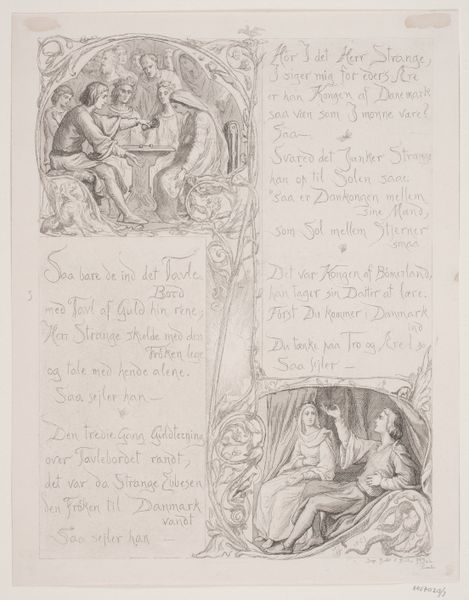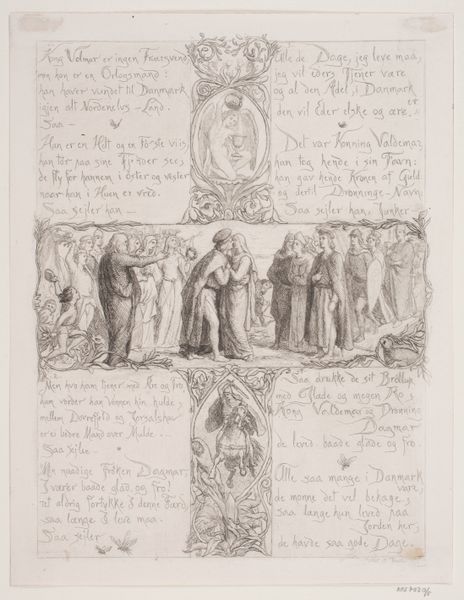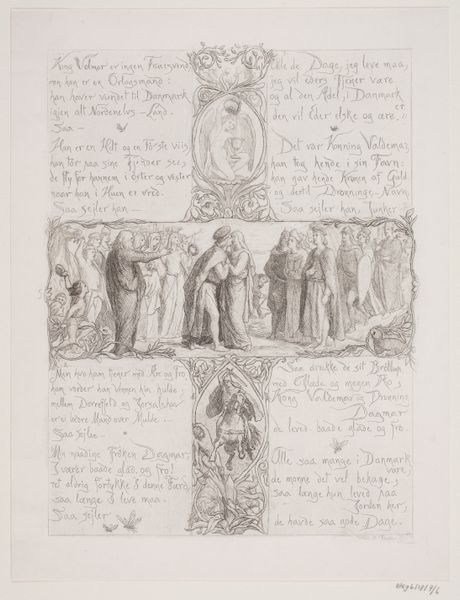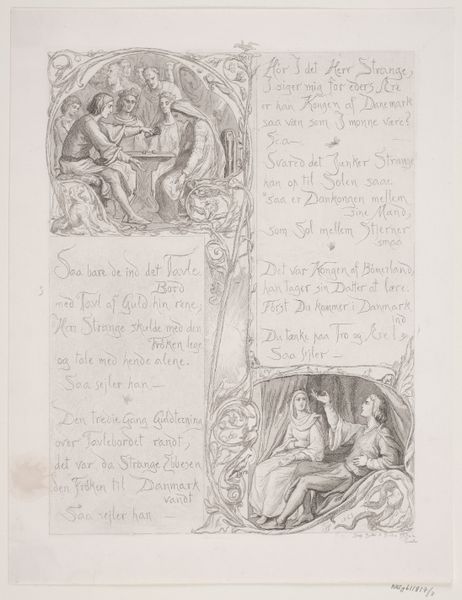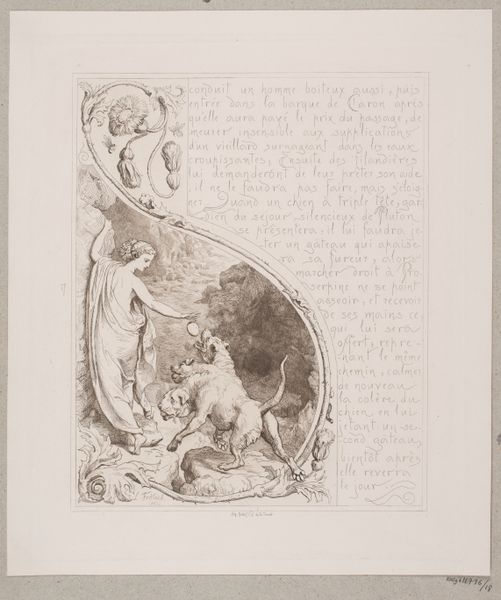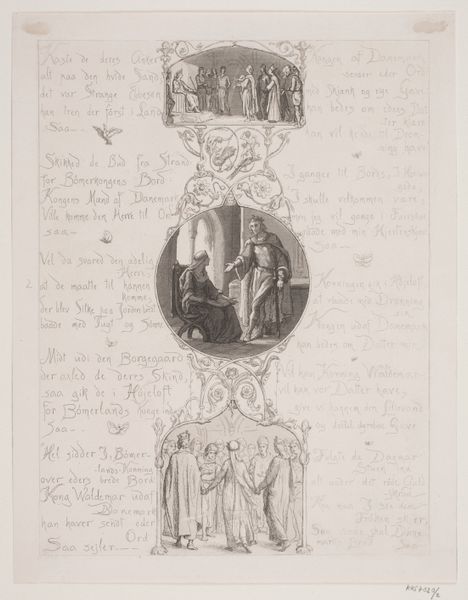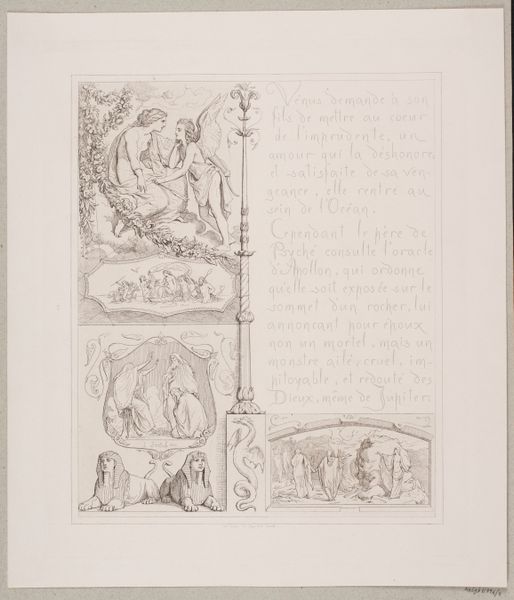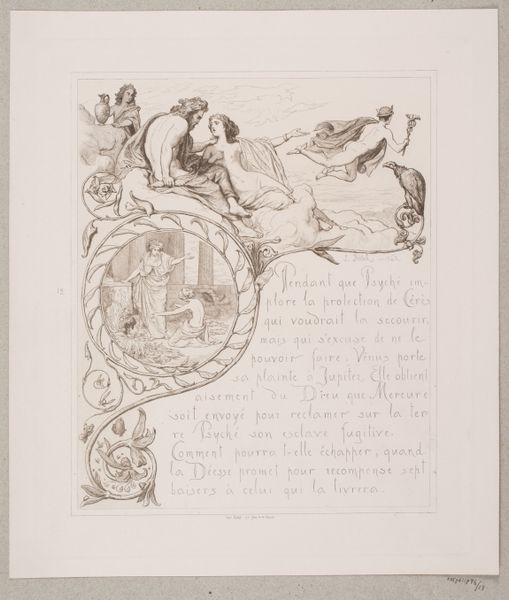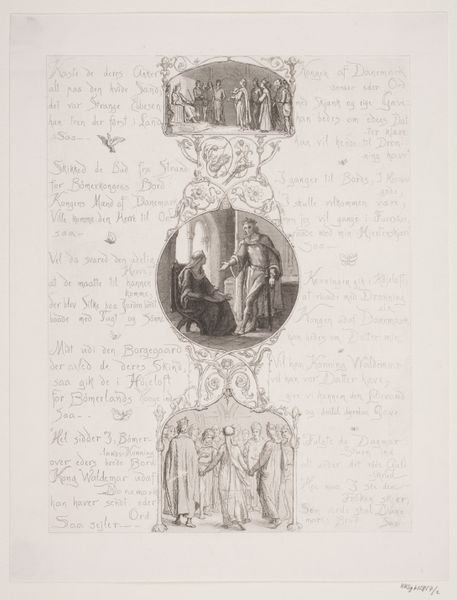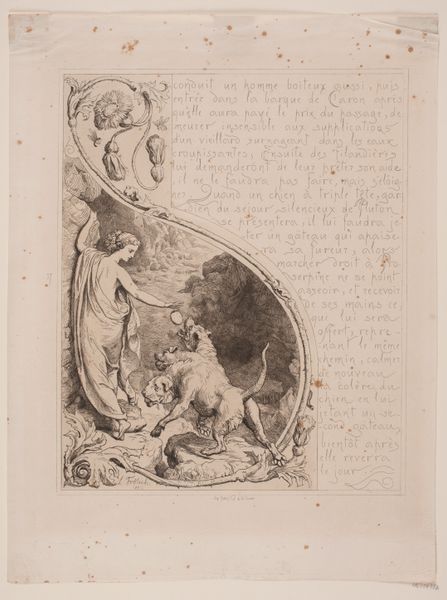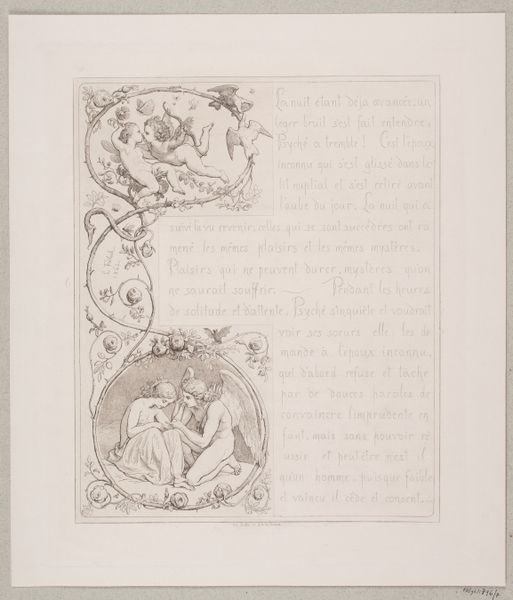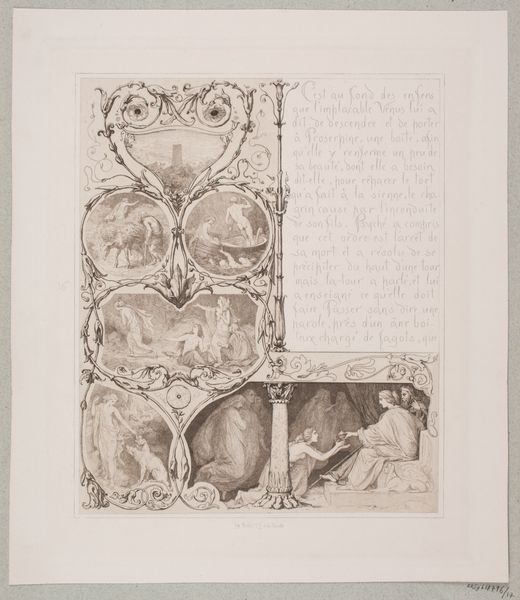
Illustration nr. 4 til "Visen om Dronning Dagmars ankomst til Danmark" 1863
0:00
0:00
Dimensions: 263 mm (height) x 205 mm (width) (bladmaal)
Curator: This engraving by Lorenz Frølich from 1863, titled "Illustration nr. 4 til "Visen om Dronning Dagmars ankomst til Danmark"", which translates to "Illustration No. 4 to 'The ballad of Queen Dagmar's arrival to Denmark'", beautifully encapsulates a romanticised vision of Danish history. Editor: It’s intricate, isn't it? The detail, particularly in the faces and drapery, evokes a quiet solemnity, a pre-Raphaelite melancholy despite being a ballad illustration. The whole composition has the air of a manuscript illumination, which positions the legend in a clear lineage of cultural representation. Curator: Indeed. Frølich's work emerged during a period of intense national romanticism in Denmark. This piece wasn’t just illustrative; it was instrumental in shaping and solidifying national identity, imbuing historical events with a certain emotional tenor that resonated deeply. Editor: So it is both artistic and political work. How were women viewed at this time, and in what way did Queen Dagmar play into these beliefs? I'm also curious to know what kind of sources Frølich drew upon, given that romanticism itself constructs imagined pasts through selective aesthetics and narratives. The depiction of Dagmar here is so sentimental, even angelic. I have a hard time seeing this as anything but a patriarchal interpretation of her existence. Curator: Well, the historical Dagmar—or Markéta of Bohemia—was indeed reimagined in popular imagination. During Frølich's time, there was an effort to elevate figures like her as models of idealised femininity and national virtue. By the 19th century, she represented values like piety, gentleness, and sacrifice, conveniently fitting the era’s gendered expectations. The engraving and related verses function within this context to cement a national myth and propagate very specific beliefs about the ideal woman. Editor: I see your point. Placing Frølich’s illustration in relation to the performance of gender and cultural identity opens a window onto a complex historical framework that continues to evolve to the present day. That makes it worth further discussion, even today. Curator: Absolutely, especially as this artwork exists not just as an aesthetic object, but as an active participant in broader conversations about history, memory, and cultural meaning.
Comments
No comments
Be the first to comment and join the conversation on the ultimate creative platform.

